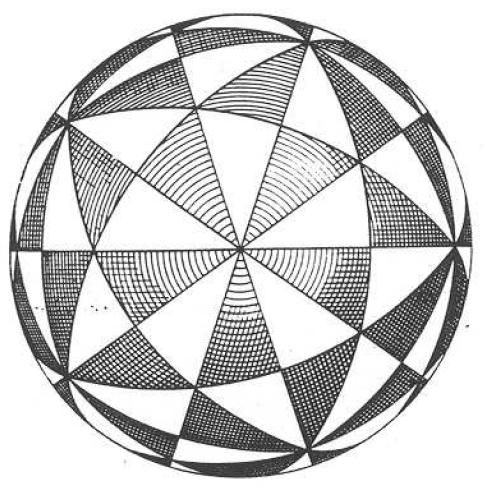There are many variants of the “You should be able to solve this.” meme, the most famous being the Haruhi problem. Many have definite solutions but the problems are often complex or intractable, while some are purposefully ill-posed to act as traps. One of my favorites is the following,

which lies in a sweet-spot of interesting yet tractable problems, at least with respect to other similar images of this format that I have seen.
Solution
Let $\bar{\mathbb{Q}}_{\geq0}$ be the set of non-negative, real, algebraic numbers and define
\[C_P=\bigcup_{\alpha\in\bar{\mathbb{Q}}_{\geq0}}\left\{X\in\mathbb{R}^2\,|\,d(X,\,P)=\alpha\right\},\]this is the set of points the punch fails to eliminate when applied at $P$. Note that $P\in C_P$ because $P$ is not a transcendental distance from itself.
It is easy to see that punching out $0$ points or $1$ point is insufficient to knock out the whole plane. Punching out $2$ points $P\neq Q$ is also insufficient because $C_P\cap C_Q$ is non-empty, as it contains the intersections of circles in $C_P$ and $C_Q$.
So what about $3$ points? Consider punching out $(0,\,0)$ and $(1,\,0)$. Any point $(x_0,\,y_0)\in C_{(0,\,0)}\cap C_{(1,\,0)}$ must be the solution to
\[x_0^2+y_0^2=\alpha^2,\] \[(x_0-1)^2+y_0^2=\beta^2\]where $\alpha$ is the radius of a circle about $(0,\,0)$ in $C_{(0,\,0)}$ and $\beta$ is the radius of a circle about $(1,\,0)$ in $C_{(1,\,0)}$. One may rearrange the above equations to show $x_0$ is the solution to a polynomial equation with algebraic coefficients (hence so is $y_0$), and the algebraic numbers are algebraically closed so this implies that $x_0$ and $y_0$ are algebraic numbers.
Now use the hole punch on $(\pi,\,0)$ and consider a point satisfying $(x_0,\,y_0)\in C_{(0,\,0)}\cap C_{(1,\,0)}$ and suppose $(x_0,\,y_0)\in C_{(\pi,\,0)}$ as well. Since the point $(x_0,\,y_0)$ is in $C_{(0,\,0)}\cap C_{(1,\,0)}$ we know it must have algebraic coordinates, and because the point is also in $C_{(\pi,\,0)}$, these coordinates must satisfy the equation
\[(x_0-\pi)^2+y_0^2=\gamma^2\]for some algebraic number $\gamma$. But this implies that $\pi$ is algebraic, a contradiction, so $(x_0,\,y_0)\notin C_{(\pi,\,0)}$. Thus applying the punch to $(0,\,0)$, $(1,\,0)$, and $(\pi,\,0)$ is sufficient to knock out the whole plane.
